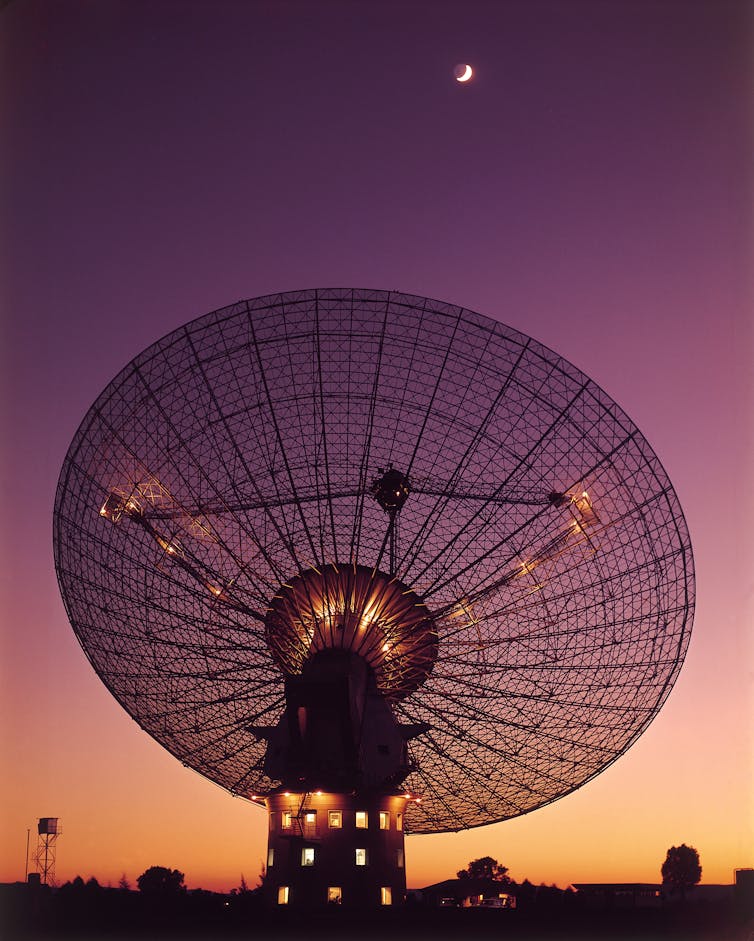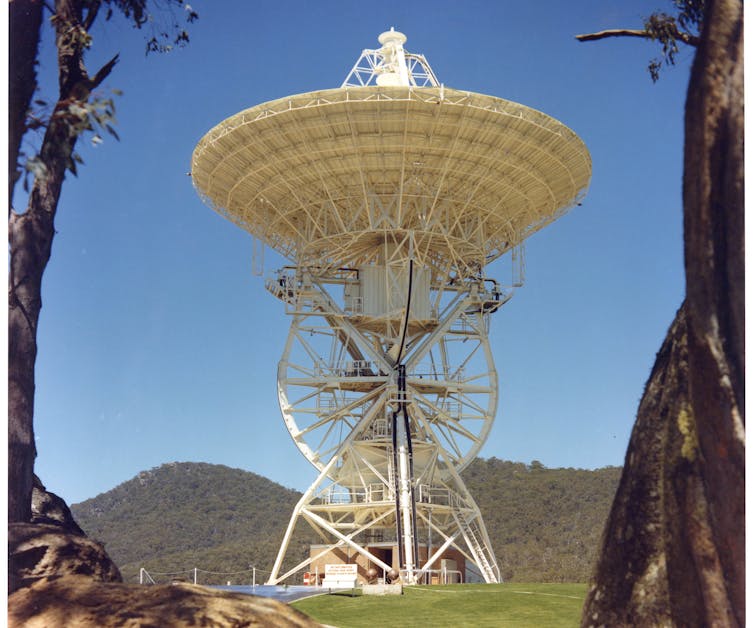http://theconversation.com/not-one-...gnals-back-from-the-apollo-11-moonwalk-108177
" Right place, right time
Our geographical location was ideal as US spacecraft would pass over Australia during their first orbit, soon after launch. Tracking facilities in Australia could confirm and refine their orbits at the earliest possible opportunity for the mission teams.
To maintain continuous coverage of spacecraft in space as the Earth turned, NASA required a network of at least three tracking stations, spaced 120 degrees apart in longitude. Since the first was established in the US at Goldstone, California, Australia was in exactly the right longitude for another tracking station. The third station was near Madrid in Spain.

Australia’s world-leading place in radio astronomy was another factor, having played a key role in founding the science after the second world war. Consequently, Australian engineers and scientists developed great expertise in designing and building sensitive radio receivers and antennas.
While these were great at discovering pulsars and other stars, they also excelled at tracking spacecraft. When the CSIRO Parkes radio telescopeopened in 1961 it was the most advanced and sensitive dish in the world. It became the model for NASA’s large tracking antennas.

The Parkes dish with Moon in 1969. CSIRO, Author provided
The Commonwealth Rocket Range at Woomera, South Australia, also allowed Australians to gain experience in tracking missiles and other advanced systems.
The dish you need is at Honeysuckle Creek
NASA invested a considerable amount in its Australian tracking facilities, all staffed and operated by Australians under a nation-to-nation treaty signed in February 1960.
For human spaceflight, the main tracking station was at Honeysuckle Creek, near Canberra. Its 26-metre dish was designed as NASA’s prime antenna in Australia for supporting astronauts on the Moon.

Honeysuckle Creek antenna in 1969. Hamish Lindsay, Author provided
NASA’s nearby Deep Space Network station at Tidbinbilla also had a 26-metre antenna but with a more sensitive radio receiver. It was called on to act as a wing station to Honeysuckle Creek, enhancing its capabilities, and ultimately tracked the orbiting command module during Apollo 11.
Over in Western Australia, Carnarvon’s smaller 9-metre antenna was used to track the Apollo spacecraft when initially in Earth orbit, as well as to receive signals from the lunar surface experiments.
To augment the receiving capabilities of these stations, the 64-metre Parkes radio telescope was asked to support Apollo 11 while astronauts were on the lunar surface. The observatory’s director, John Bolton, was prepared to accept a one-line contract:
The Radiophysics Division would agree to support the Apollo 11 mission. "
Only a small part of a n interesting read : http://theconversation.com/not-one-...gnals-back-from-the-apollo-11-moonwalk-108177
" Right place, right time
Our geographical location was ideal as US spacecraft would pass over Australia during their first orbit, soon after launch. Tracking facilities in Australia could confirm and refine their orbits at the earliest possible opportunity for the mission teams.
To maintain continuous coverage of spacecraft in space as the Earth turned, NASA required a network of at least three tracking stations, spaced 120 degrees apart in longitude. Since the first was established in the US at Goldstone, California, Australia was in exactly the right longitude for another tracking station. The third station was near Madrid in Spain.

Australia’s world-leading place in radio astronomy was another factor, having played a key role in founding the science after the second world war. Consequently, Australian engineers and scientists developed great expertise in designing and building sensitive radio receivers and antennas.
While these were great at discovering pulsars and other stars, they also excelled at tracking spacecraft. When the CSIRO Parkes radio telescopeopened in 1961 it was the most advanced and sensitive dish in the world. It became the model for NASA’s large tracking antennas.

The Parkes dish with Moon in 1969. CSIRO, Author provided
The Commonwealth Rocket Range at Woomera, South Australia, also allowed Australians to gain experience in tracking missiles and other advanced systems.
The dish you need is at Honeysuckle Creek
NASA invested a considerable amount in its Australian tracking facilities, all staffed and operated by Australians under a nation-to-nation treaty signed in February 1960.
For human spaceflight, the main tracking station was at Honeysuckle Creek, near Canberra. Its 26-metre dish was designed as NASA’s prime antenna in Australia for supporting astronauts on the Moon.

Honeysuckle Creek antenna in 1969. Hamish Lindsay, Author provided
NASA’s nearby Deep Space Network station at Tidbinbilla also had a 26-metre antenna but with a more sensitive radio receiver. It was called on to act as a wing station to Honeysuckle Creek, enhancing its capabilities, and ultimately tracked the orbiting command module during Apollo 11.
Over in Western Australia, Carnarvon’s smaller 9-metre antenna was used to track the Apollo spacecraft when initially in Earth orbit, as well as to receive signals from the lunar surface experiments.
To augment the receiving capabilities of these stations, the 64-metre Parkes radio telescope was asked to support Apollo 11 while astronauts were on the lunar surface. The observatory’s director, John Bolton, was prepared to accept a one-line contract:
The Radiophysics Division would agree to support the Apollo 11 mission. "
Only a small part of a n interesting read : http://theconversation.com/not-one-...gnals-back-from-the-apollo-11-moonwalk-108177
